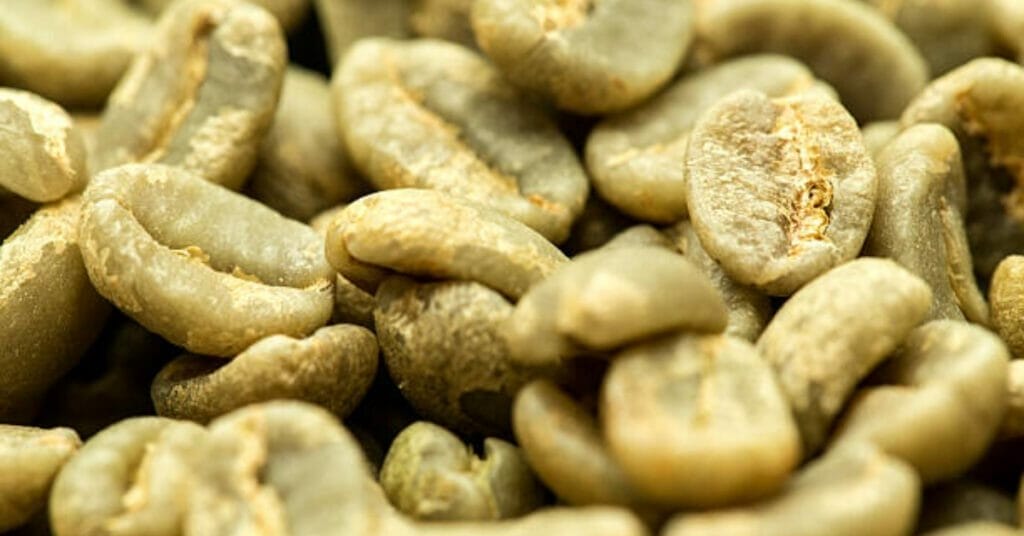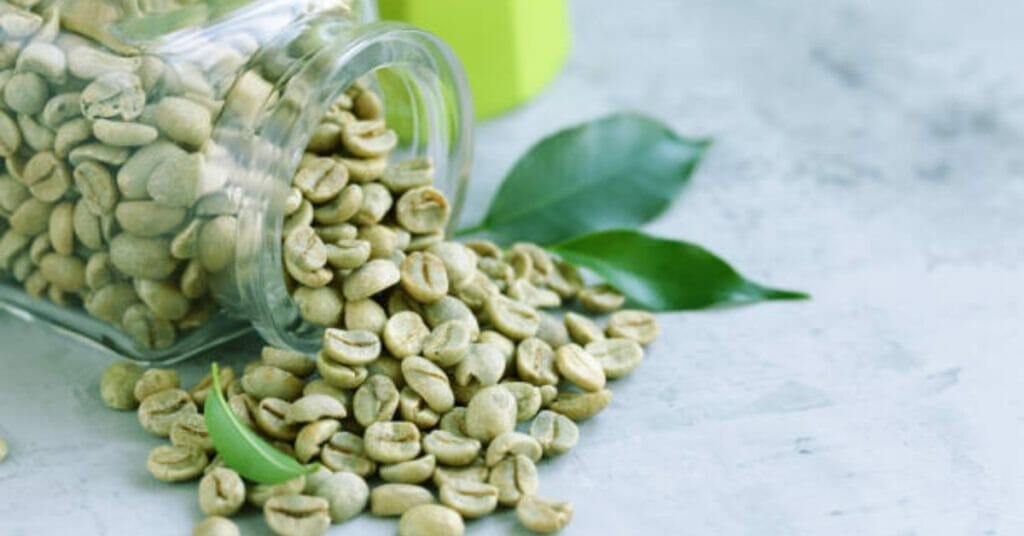Are your coffee beans pure? Ensuring the quality and purity of green coffee beans is paramount in coffee production.
However, one persistent challenge coffee producers and enthusiasts face is the presence of larva in green coffee beans.
These unwelcome pests can compromise the flavor and safety of the beans.
This guide will explore practical methods to tackle this issue head-on.
From storage techniques to preventive measures, we’ll delve into “how to eliminate larva in green coffee beans,” equipping you with the knowledge and strategies needed to safeguard the integrity of your coffee beans and brew the perfect cup of joe.
Embark on this journey to uncover the secrets of larva-free green coffee beans together.
Table of Contents
How to Eliminate Larva in Green Coffee Beans: Understanding Larva Infestation

In the world of coffee, the quality of beans holds paramount importance.
However, a lurking threat jeopardizes the integrity of these precious green coffee beans – larva infestation.
To begin, let’s demystify how to eliminate larva in green coffee beans.
In the coffee realm, larva signifies the immature stage of insects that can infiltrate beans during various stages of their lifecycle.
These larvae, belonging to different insect species like beetles, weevils, and moths, can detrimentally impact coffee quality.
Larva infestations in green coffee beans can occur through multiple pathways, each presenting unique challenges.
During harvesting and processing, coffee cherries may become infested with eggs or larvae, later making their way into green coffee beans during drying and milling.
Additionally, improper storage conditions, such as high humidity and inadequate packaging, offer an inviting haven for insects to lay eggs and propagate within the coffee beans.
Detecting larva infestations is vital for maintaining coffee quality.
Signs may vary based on the specific insect species, but typical indicators are red flags for all coffee enthusiasts.
Visible cues include tiny holes or tunnels on bean surfaces, evidence of larva burrowing.
Discoloration or dark spots may also manifest.
Moreover, a distinctive musty or rancid odor can indicate larva infestation.
Regular inspections of green coffee beans are recommended to aid identification.
Observing physical characteristics associated with infestation, such as webbing, cocoons, or actual larvae, during these inspections is crucial.
Vigilant monitoring can help prevent further infestation and enable prompt action.
Proactive steps to eliminate larva in green coffee beans ensure a consistently exceptional coffee experience.
Preventive Measures to Prevent Larva Infestation

In safeguarding green coffee beans from the threat of larva infestation and upholding their quality, it is imperative to adopt preventive strategies.
Here are the essential steps to adhere to:
1: Advocating Preventive Actions
Raise awareness among stakeholders about the critical need for proactive measures throughout the coffee supply chain to ward off larva infestation.
2: Storage Guidelines
Ensure proper storage conditions by maintaining green coffee beans in a relaxed, dry environment with temperatures between 50 and 70°F (10 and 21°C) and humidity levels in the 55–65% range.
The Glass storage option is good.
Protect the beans from direct sunlight and ensure adequate ventilation.
3: Rigorous Inspection of Green Coffee Beans
Upon the beans’ arrival, conduct thorough inspections to detect signs of infestation, including holes, tunnels, or discoloration.
Equip personnel with the knowledge to recognize these visual cues and promptly report concerns.
4: Adequate Packaging and Sealing
Utilize high-quality, airtight bags or containers explicitly designed for coffee storage.
Employ sealing techniques such as one-way degassing valves to sustain freshness and deter the ingress of insects.
By diligently implementing these precautionary measures, coffee enthusiasts can significantly reduce the risk of larva infestation and preserve the quality of their green coffee beans.
Natural Methods to Destroy Larva in Green Coffee Beans

Numerous natural methods can effectively address the issue when confronted with the challenge of larva infestation in green coffee beans.
Green bean benefits are numerous, from aiding in weight management to providing a rich source of antioxidants, removing eye circles and promoting overall well-being.
These methods offer eco-friendly alternatives to chemical treatments for eliminating larva in green coffee beans.
Here, we present various natural remedies and techniques for eliminating larva infestation:
1: Freezing
Freezing controls larva in green coffee beans. Frozen Coffee beans helps destroy larva.
By subjecting the infested beans to sub-zero temperatures, the larvae cannot survive.
- Place the affected coffee beans in airtight containers or bags to prevent moisture absorption.
- Position the containers in a freezer set to a temperature of -18°C or lower.
- Leave the beans in the freezer for at least 48 hours to ensure thorough eradication of the larvae.
It’s important to note that while freezing can effectively destroy larvae, it may not eliminate all eggs or pupae.
Therefore, periodic inspections and additional measures may be necessary to address any remaining infestations.
2: Heating
Heating is another natural method to eliminate larva infestations.
High temperatures disrupt the larval life cycle and prevent their development.
Follow these steps to use heat effectively:
- Preheat an oven or heating chamber to a temperature range of 60°C to 70°C.
- Spread the infested coffee beans evenly on a baking sheet or tray.
- Place the tray in the oven or heating chamber for 30 to 60 minutes.
- Ensure the beans reach the desired temperature range, which is crucial for destroying larvae.
While heating can be effective, caution is necessary to avoid overheating the beans, as excessive temperatures can alter the coffee’s flavor profile.
3: Sunlight Exposure
Here’s how to utilize this method:
- Spread the infested coffee beans in a thin layer on a clean surface, like a tarp or tray.
- Let the beans bask in the sunlight for 2 to 3 days, turning them regularly to ensure exposure on all sides.
While this method can be effective, it’s important to consider weather conditions and environmental factors, as prolonged exposure to moisture or high humidity may hinder sunlight’s effectiveness in destroying larvae.
It’s essential to understand that natural methods, while effective, may have limitations and considerations.
The severity of infestation, temperature control, and treatment thoroughness can impact the success of these methods.
Therefore, assessing specific circumstances and consulting with experts or agricultural professionals is advisable to determine the most suitable approach.
Chemical Approaches for Larva Elimination

In the battle against eliminating larva in green coffee beans, chemical methods offer practical solutions to safeguard the quality and safety of the beans.
These strategies entail the utilization of approved pesticides and insecticides specially designed for the coffee industry.
1: Pesticides and Insecticides
Pesticides and insecticides are pivotal in managing larva infestations in green coffee beans.
These chemical compounds are engineered to target and exterminate larvae, preserving the beans from damage and upholding their integrity.
Prominently used pesticides in the coffee industry encompass:
2: Pyrethroids
These synthetic insecticides are highly efficient against various pests, including larvae.
3: Neonicotinoids
This class of insecticides functions by affecting the central nervous system of pests, including larvae.
Neonicotinoids exhibit a wide range of activity and are renowned for their systemic properties, rendering them effective in controlling infestations.
The Significance of Approved Chemicals:
When employing chemical approaches for larva elimination, it is paramount to use approved pesticides and insecticides.
Approved chemicals undergo rigorous testing and evaluation to ensure their safety and efficacy.
Opting for approved products instills confidence in the reliability and effectiveness of the chemicals used by coffee producers.
Furthermore, using approved chemicals ensures adherence to local regulations, fortifies consumer protection, and promotes environmental conservation.
Safety Protocols and Correct Application:
Adherence to safety protocols and proper application methods is imperative to optimize the effectiveness of chemical approaches and minimize potential risks.
Consider the following guidelines for the secure and efficient use of chemical larva elimination techniques:
- Thoroughly read and adhere to the product labels’ instructions.
- During the application process, don appropriate personal protective equipment like gloves, masks, and goggles.
- Dilute the chemicals to the recommended dosage and apply them uniformly to the infested green coffee beans.
- Implement measures to prevent contaminating adjacent areas, water sources, or other crops during the application.
- Store chemicals in designated areas away from food, ensuring proper sealing and labeling.
It is crucial to underscore that coffee producers should consult local regulations and guidelines specific to their region before deploying chemical approaches.
Compliance with these regulations ensures alignment with legal requirements and safeguards the well-being of consumers and the environment.
Post-Infestation Cleanup and Prevention
Eliminating larva in green coffee beans requires swift action and preventive measures.
After detection, follow these steps:
1: Disposal of Infested Beans
Separate and seal infested beans for proper disposal to prevent further infestation.
2: Clean Storage Areas
Empty, vacuum, and thoroughly disinfect storage spaces to eliminate larva and eggs, allowing them to dry before reintroducing beans.
3: Implement Preventive Measures
Inspect incoming beans, enhance storage conditions, and train staff for stricter pest prevention.
4: Ongoing Monitoring and Maintenance
Regular inspections, traps, hygiene, and staying informed are vital to ensuring larva-free coffee production.
Prevention is paramount.
How to Eliminate Larva in Green Coffee Beans || FAQS
Are Green Coffee Beans Insect-Infested?
Green coffee beans can be infested by insects, posing a quality and safety concern. Proper storage and inspection are essential for prevention.
Do Coffee Grounds Repel Maggots?
Coffee grounds may deter maggots and insects due to their strong scent and natural repellent properties. Placing them around potential infestation areas can be effective.
What happens if you find Worms in Coffee Grounds?
Finding worms in coffee grounds is unsanitary and indicates contamination. Discard the coffee and clean the storage area to prevent further infestation.
How do you get rid of Worms in a Coffee Maker?
To eliminate worms in a coffee maker, thoroughly clean and disinfect all components, including the water reservoir, carafe, and filter basket. Run vinegar or a commercial coffee maker cleaner through the machine to ensure it’s pests-free.
Conclusion
In conclusion, the methods discussed in “how to eliminate larva in green coffee beans” empower coffee enthusiasts and producers to protect their precious beans from unwanted infestations.
With proper storage and vigilance, you can preserve the quality of green coffee beans and enjoy a larva-free coffee experience.
Stay informed and proactive to savor the true essence of your brew.







